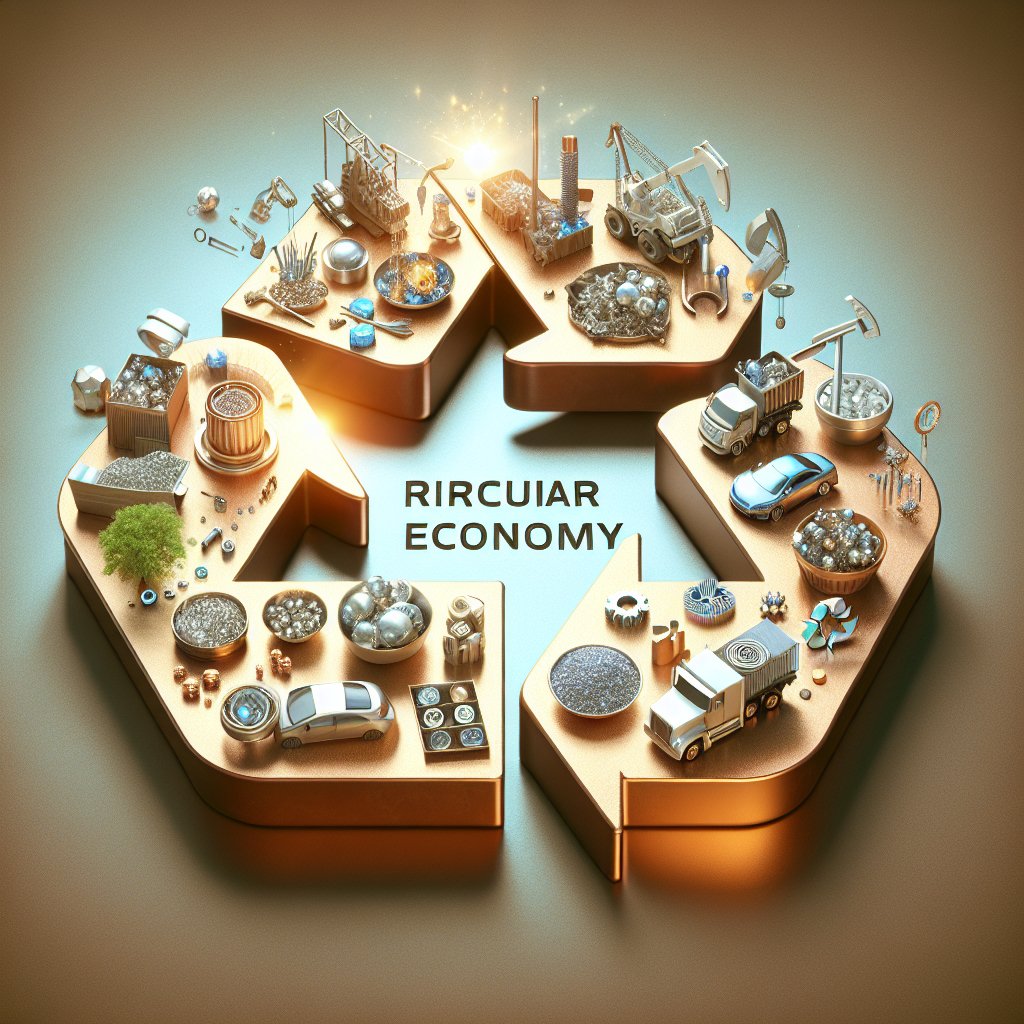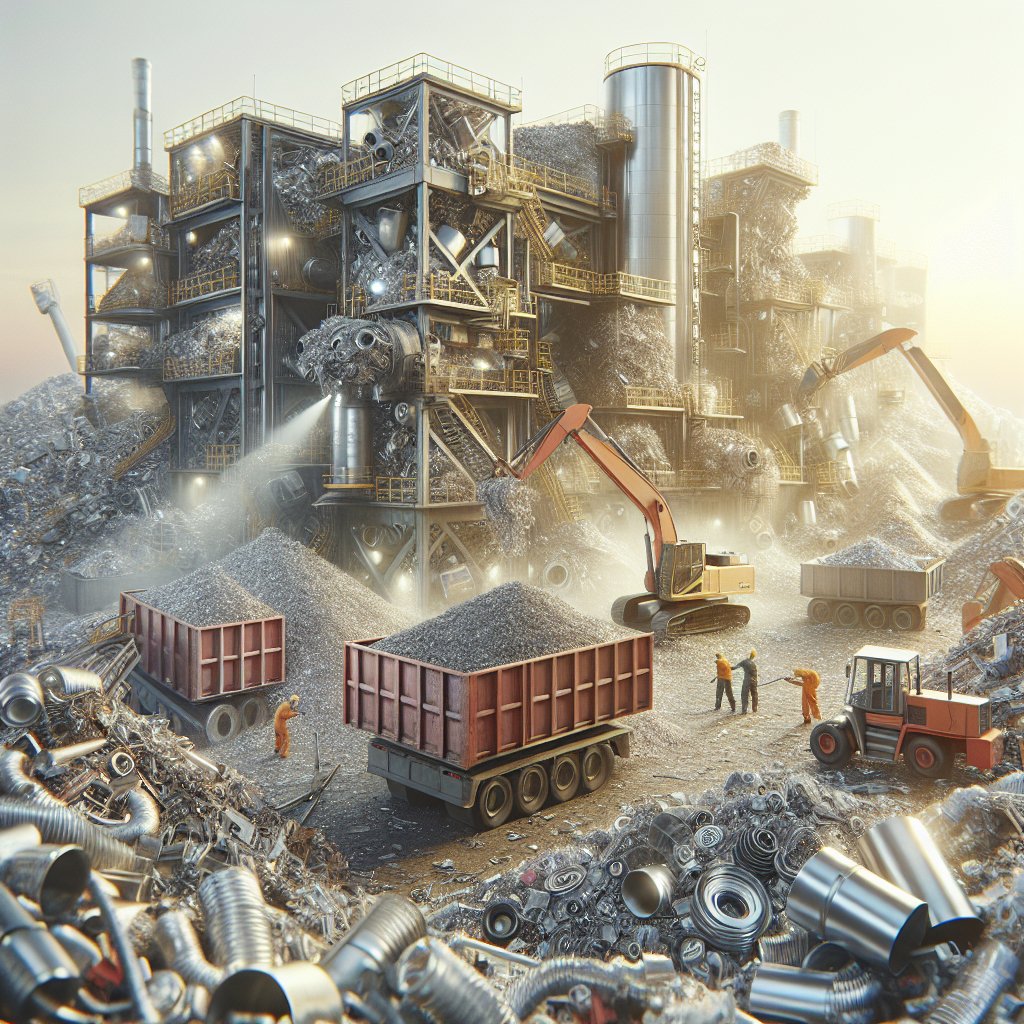The increasing demand for rare metals, driven by technological advancements and the transition to a low-carbon economy, has brought the concept of a circular economy to the forefront of discussions on sustainability. Rare metals, such as lithium, cobalt, and rare earth elements, are essential components in a wide range of high-tech applications, from smartphones to electric vehicles and renewable energy technologies. As the world grapples with the environmental and economic challenges posed by the extraction and consumption of these critical resources, the circular economy offers a promising framework for achieving a more sustainable future.
The Importance of Rare Metals in Modern Technology
Rare metals play a crucial role in the development and functioning of modern technology. These elements are integral to the production of electronic devices, renewable energy systems, and advanced manufacturing processes. For instance, lithium and cobalt are key components in the batteries that power electric vehicles and portable electronics. Similarly, rare earth elements are vital for the production of wind turbines, solar panels, and various high-performance magnets used in a range of applications.
The demand for these metals is expected to grow significantly in the coming years, driven by the global push towards decarbonization and the increasing adoption of clean energy technologies. According to industry reports, the market for rare metals is projected to expand rapidly, with some estimates suggesting that the demand for lithium alone could increase by more than 500% by 2050. This surge in demand presents both opportunities and challenges for the global economy, as countries and companies strive to secure reliable and sustainable sources of these critical materials.
However, the extraction and processing of rare metals are often associated with significant environmental and social impacts. Mining operations can lead to habitat destruction, water pollution, and greenhouse gas emissions, while also posing risks to local communities and workers. These challenges underscore the need for more sustainable approaches to managing the lifecycle of rare metals, from extraction to end-of-life disposal.
The Circular Economy: A Pathway to Sustainability
The circular economy offers a transformative approach to addressing the challenges associated with rare metals. Unlike the traditional linear economy, which follows a “take-make-dispose” model, the circular economy emphasizes the principles of reducing, reusing, and recycling resources. By closing the loop on resource use, the circular economy aims to minimize waste, reduce environmental impacts, and create economic value through more efficient and sustainable practices.
In the context of rare metals, the circular economy involves several key strategies. First, it encourages the design of products and systems that prioritize resource efficiency and longevity. This includes developing technologies that require fewer rare metals or that can be easily disassembled and recycled at the end of their life. Second, the circular economy promotes the recovery and recycling of rare metals from end-of-life products, such as electronic waste and used batteries. By recovering valuable materials from discarded products, the circular economy can help reduce the need for new mining operations and decrease the environmental footprint of resource extraction.
Moreover, the circular economy supports the development of new business models and value chains that prioritize sustainability. For example, companies can adopt product-as-a-service models, where consumers lease or rent products rather than purchasing them outright. This approach incentivizes manufacturers to design durable and repairable products, as they retain ownership and responsibility for the product throughout its lifecycle.
Governments and policymakers also play a crucial role in facilitating the transition to a circular economy for rare metals. By implementing supportive regulations, incentives, and infrastructure, they can encourage the adoption of circular practices and foster collaboration among stakeholders across the value chain.
Challenges and Opportunities in Implementing a Circular Economy for Rare Metals
While the circular economy presents a promising framework for managing rare metals sustainably, several challenges must be addressed to realize its full potential. One of the primary obstacles is the complexity of recycling rare metals from end-of-life products. Many electronic devices and technologies contain small amounts of rare metals that are difficult to extract and separate from other materials. Developing efficient and cost-effective recycling technologies is essential to overcoming this challenge and increasing the recovery rates of rare metals.
Another challenge is the lack of standardized systems and infrastructure for collecting and processing end-of-life products. In many regions, electronic waste is not adequately managed, leading to significant losses of valuable materials and environmental harm. Establishing robust collection and recycling systems, along with clear guidelines and standards, is critical to supporting the circular economy for rare metals.
Despite these challenges, the transition to a circular economy for rare metals offers significant opportunities for innovation, economic growth, and environmental protection. By embracing circular principles, companies can reduce their reliance on finite resources, lower their environmental impact, and enhance their competitiveness in a rapidly changing market. Additionally, the circular economy can create new jobs and industries focused on recycling, remanufacturing, and sustainable product design.
In conclusion, the integration of rare metals into a circular economy framework is essential for achieving a sustainable future. By rethinking how we produce, use, and dispose of these critical resources, we can reduce environmental impacts, conserve valuable materials, and support the transition to a low-carbon economy. As stakeholders across the value chain collaborate to implement circular practices, the potential for a more sustainable and resilient global economy becomes increasingly attainable.












